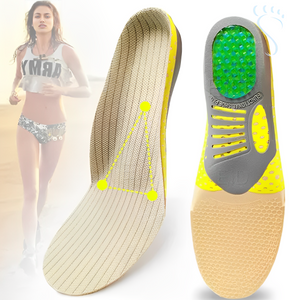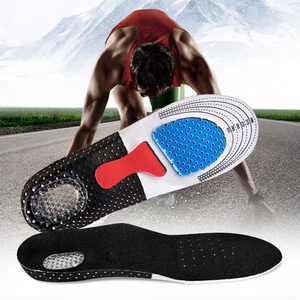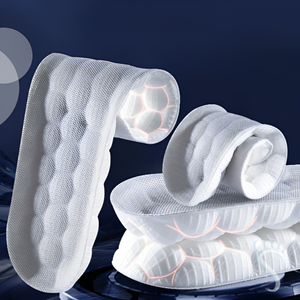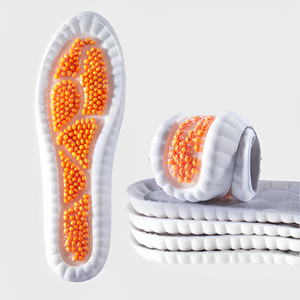Plantar Fasciitis: Symptoms, Causes, and Treatments
Plantar fasciitis is one of the leading causes of foot pain, especially among adults. It is estimated that 10% to 15% of adults may develop this condition at some point in their lives. In this article, you'll learn about the causes, symptoms, prevention methods, and treatments for plantar fasciitis.
What Is Plantar Fasciitis?
Plantar fasciitis is the inflammation of the plantar fascia — the tissue that runs along the sole of your foot, from the heel to the toes. This tissue helps support the arch of the foot and absorbs impact during walking. Inflammation can occur due to excess weight, intense physical activity, improper footwear, or foot arch problems.
It causes sharp pain in the heel and arch of the foot, making walking and daily activities difficult. It is often confused with heel spurs, but they are different conditions. Plantar fasciitis inflames the soft tissue, while a heel spur is a bony growth that may cause nearby inflammation.
Causes of Plantar Fasciitis
Some studies link plantar fasciitis pain to structural changes in the foot, often triggered by high-impact exercise, excess weight, and age. According to Dr. Drauzio Varella, the exact cause remains unknown, but intense stretching or repetitive microtraumas to the fascia are believed to be key factors.
Risk Factors for Plantar Fasciitis
Several internal (structural) and external (habitual or activity-based) factors may increase the risk:
-
Obesity: Excess body weight overloads the foot structures.
-
Age: Common in people aged 40–60 due to tissue degeneration.
-
High-impact activities: Running, walking long distances, or standing for extended periods can stress the fascia.
-
Improper footwear: Tight shoes or those with little cushioning reduce impact absorption.
Gait Patterns
-
Supinated gait: Outward ankle misalignment concentrates pressure on the outer edge of the foot, straining the fascia.
-
Pronated gait: Inward ankle motion increases inner foot pressure and stress on the fascia.
Foot Types
-
High arches (cavus foot): Less surface contact causes pressure on toes and heel, tightening the fascia.
-
Flat feet: Full foot contact with the ground reduces shock absorption and overloads the fascia.
Muscle Imbalances
A shortened posterior muscle chain — including tight hamstrings, calves, and plantar fascia — can create tension contributing to or worsening plantar fasciitis.
Symptoms of Plantar Fasciitis
Most common symptoms include heel or arch pain, especially after periods of rest. Morning pain is intense because the fascia stretches abruptly with the first step. Pain usually eases with movement but returns after extended activity. Swelling and redness can occur but are less common than pain. Daily activities can become limited due to discomfort.
Diagnosing Plantar Fasciitis
Diagnosis starts with a medical history and physical exam by a healthcare provider. The doctor checks for tenderness in the heel and arch, range of motion, and pain points. Imaging tests like X-rays or MRI may be used to rule out other conditions.
What Tests Detect Plantar Fasciitis?
Clinical evaluation is key, but ultrasound is often used to assess fascia thickness and inflammation. MRI provides more detailed imaging but is more expensive.
Treatment for Plantar Fasciitis
Initial treatment is conservative, aiming to reduce pain and inflammation and relieve pressure on the heel and arch.
-
Maintain healthy weight: Reduces foot overload.
-
Correct gait: Exercises and orthotic insoles help realign movement.
-
Acupuncture and dry needling: Reduce pain and stimulate healing.
-
Night splints: Keep feet in a neutral position to reduce morning pain.
-
Proper footwear: Cushioned and supportive shoes minimize fascia stress.
-
Anti-inflammatory medications: Help control symptoms, usually alongside other therapies.
Pisato Orthotic Insoles for Plantar Fasciitis
Pisato orthotic insoles are an effective, non-invasive solution. Custom-designed for individual needs, they help redistribute pressure, reduce fascia tension, and improve foot biomechanics.
With regular use, Pisato insoles correct gait issues, reduce inflammation, and prevent the condition from worsening. They provide arch support, realign the fascia, and prevent overload. For high arches, they increase contact area; for flat feet, they offer structured arch support.
Footwear for Plantar Fasciitis
Standard shoes are not tailored to foot anatomy. When choosing footwear for plantar fasciitis, cushioning and comfort are key. Avoid rigid soles and high heels. Ideal shoes allow 1–1.5 cm of toe space and include shock absorbers for demanding physical activity.
Frequently Asked Questions About Plantar Fasciitis
Do insoles help with plantar fasciitis?
Yes. Insoles support the arch, redistribute pressure, and absorb impact. Custom insoles offer even better fit and comfort.
How can I cure plantar fasciitis quickly?
There is no quick cure, but rest, ice, orthotic insoles, stretching, physiotherapy, and in some cases, medical interventions can promote recovery.
How long does a plantar fasciitis flare-up last?
It varies. Acute flare-ups may last weeks to months. Chronic cases can persist longer if untreated.
Can I wear high heels with plantar fasciitis?
Not recommended. High heels shorten calf muscles, alter gait, and strain the arch, worsening the condition.
What is chronic plantar fasciitis?
A long-term inflammation of the fascia that causes persistent pain, sometimes lasting months or years.
What are rehabilitation options for plantar fasciitis?
Rehab includes physiotherapy, stretching, strengthening, insoles, massage, corticosteroid injections, and shockwave therapy.
Can I work standing up if I have plantar fasciitis?
Yes, but with precautions: wear proper shoes, take breaks, use orthotic insoles, and stretch regularly. Always consult a healthcare provider.






